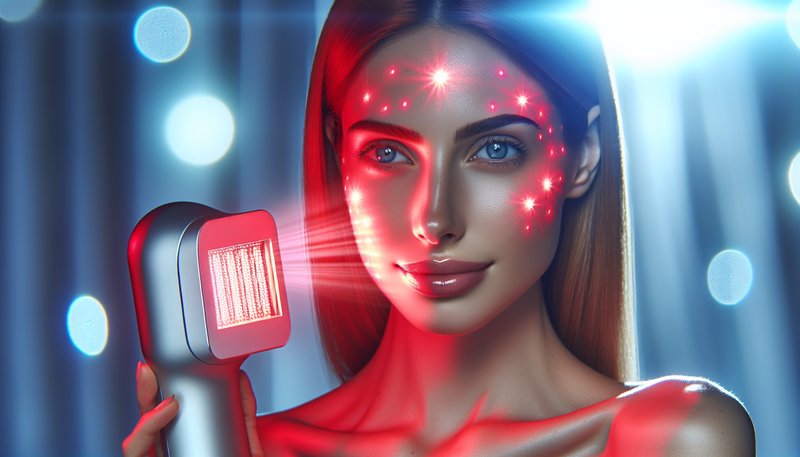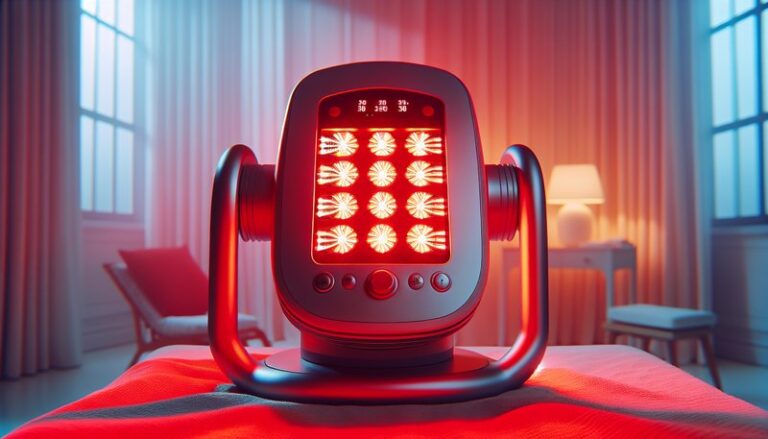Does Red Light Therapy Cause Hyperpigmentation?
Does Red Light Therapy Cause Hyperpigmentation?
Is red light therapy a skin treatment miracle or a potential cause for concern regarding hyperpigmentation?
Find all the details in Watts for Red Light Therapy?
This article delves into the relationship between red light therapy and hyperpigmentation, exploring the science behind this innovative skin treatment, its benefits, risks, and the considerations you should keep in mind before utilizing it. We aim to provide you with a comprehensive understanding of how red light therapy works and whether it could contribute to hyperpigmentation issues.
Key Takeaways
- Red light therapy is generally considered safe and beneficial for various skin concerns, including acne, wrinkles, and overall skin rejuvenation.
- Most evidence does not support red light therapy as a cause of hyperpigmentation; however, individual skin types and conditions may yield varied results.
- Consulting with a dermatologist before beginning red light therapy is crucial to ensure personalized treatment that takes your unique skin concerns into account.
What is Red Light Therapy?
Red light therapy (RLT) is a non-invasive treatment that utilizes specific wavelengths of light to penetrate the skin and stimulate cellular repair and regeneration. This therapy aims to enhance the healing process, improve skin complexion, and promote overall skin health by increasing collagen production and improving blood circulation.
RLT primarily operates at wavelengths of 600 to 900 nanometers, which are optimal for therapeutic benefits. The treatment can be administered through LED devices or lasers and is often used in dermatology to treat a range of skin conditions, from acne to psoriasis, and even to promote healing in post-surgical patients.
What are the Benefits of Red Light Therapy?
Red light therapy is celebrated for its many advantages in skincare and wellness. Let’s explore some of the key benefits.
Promotes Skin Rejuvenation
Red light therapy significantly enhances skin health by increasing collagen and elastin production. This boost can lead to reduced wrinkles, improved elasticity, and an overall youthful appearance.
Helps with Acne and Scarring
The anti-inflammatory properties of red light therapy can help reduce acne outbreaks and accelerate the healing of post-acne scars. Studies have shown that regular sessions can improve skin texture and minimize scar visibility, proving beneficial for acne-prone individuals.
Reduces Inflammation
RLT aids in the reduction of inflammation associated with various skin conditions, including eczema and rosacea. By minimizing inflammation, this therapy can promote a clearer and calmer complexion, enhancing comfort for those with sensitive skin.
Enhances Wound Healing
The therapy is not only beneficial for cosmetic purposes but also accelerates wound healing. The increased blood flow and cellular repair processes supported by RLT lead to quicker recovery from injuries and skin conditions, making it a valuable option in dermatological treatments.
Is it Possible to Cause Hyperpigmentation with Red Light Therapy?
While it’s natural to be cautious about potential side effects, the consensus among dermatologists is that red light therapy is unlikely to cause hyperpigmentation in most cases. Hyperpigmentation is primarily linked with excessive sun exposure, inflammation, and certain skin types rather than with the treatment itself.
What are the Advantages of Understanding Treatment Risks?
Understanding the risks associated with any treatment, including red light therapy, empowers you to make informed choices. Knowledge allows for better management of potential skin reactions and can enhance treatment effectiveness.
What are the Disadvantages of Ignoring Treatment Risks?
Failing to consider the risks may lead to unwanted skin reactions, including increased pigmentation in susceptible individuals. Each skin type reacts differently, and not tailoring the treatment to individual needs can exacerbate existing skin issues.
What are the Things to Consider Before Starting Red Light Therapy?
Before beginning red light therapy, keep several important factors in mind.
Skin Type Sensitivity
Understanding your skin type and its sensitivity to light is vital. Consult with a dermatologist to determine if red light therapy is suitable for you based on your skin’s characteristics.
Prior Skin Conditions
Individuals with a history of photo-damage or conditions such as melasma should approach red light therapy with caution. A thorough skin assessment can help identify whether RLT might aggravate existing skin conditions.
Medications or Products
Be cautious if you’re using medications or topical products that increase photosensitivity. Ingredients like retinoids or certain antibiotics can enhance your skin’s reaction to light therapy, necessitating an evaluation by a healthcare provider.
Consultation with Professionals
Always consult with a dermatologist before proceeding. Professional advice ensures that your treatment plan aligns with your skin’s specific needs and helps mitigate any potential risks.
What are the Alternatives to Red Light Therapy?
There are several alternative treatments available that may offer similar benefits without the use of light therapy.
Chemical Peels
Chemical peels involve applying a solution that removes the outer layer of skin, promoting new skin growth. This treatment can address pigmentation issues and improve overall skin texture.
Microdermabrasion
This technique exfoliates the skin, removing dead skin cells to reveal a brighter complexion underneath. Microdermabrasion can also help with superficial pigmentation, making it a viable alternative.
Laser Treatments
Different types of lasers target pigmentation issues, offering more invasive options for those with significant hyperpigmentation concerns. These treatments often require downtime but can yield impressive results.
Topical Treatments
Over-the-counter creams or prescription medications containing hydroquinone, retinoids, or vitamin C can also reduce pigmentation and improve overall skin tone without the need for specialized equipment.
Conclusion: Is it Recommended to Use Red Light Therapy?
Red light therapy is considered a safe and effective treatment in dermatology, primarily benefiting skin rejuvenation, acne reduction, and inflammation relief. While the therapy itself is not typically associated with causing hyperpigmentation, it is essential to understand individual skin reactions and consult with a dermatologist.
For those seeking to enhance their skin health, RLT can be a valuable component of a comprehensive skincare regimen, especially when used with awareness of one’s skin type and conditions.
Frequently Asked Questions
Can anyone use red light therapy?
Most individuals can safely use red light therapy, but those with specific skin conditions or sensitivities should consult with a dermatologist beforehand.
How often should I undergo red light therapy sessions?
Typically, sessions range from 2 to 3 times per week, with the exact frequency depending on individual goals and skin conditions. Consultation with a professional can help tailor the schedule.
Read our full coverage Is Red Light Therapy Real?
Is there any downtime after red light therapy?
There is generally no downtime associated with red light therapy. Most individuals can resume their daily activities immediately after treatment.
What should I expect during a red light therapy session?
During a session, you may feel a gentle warmth as the light penetrates your skin. Treatments usually last between 15 to 30 minutes, depending on the targeted area.
Are there any side effects?
While red light therapy is largely safe, some individuals might experience mild redness or increased sensitivity after treatment. These effects are typically short-lived.





